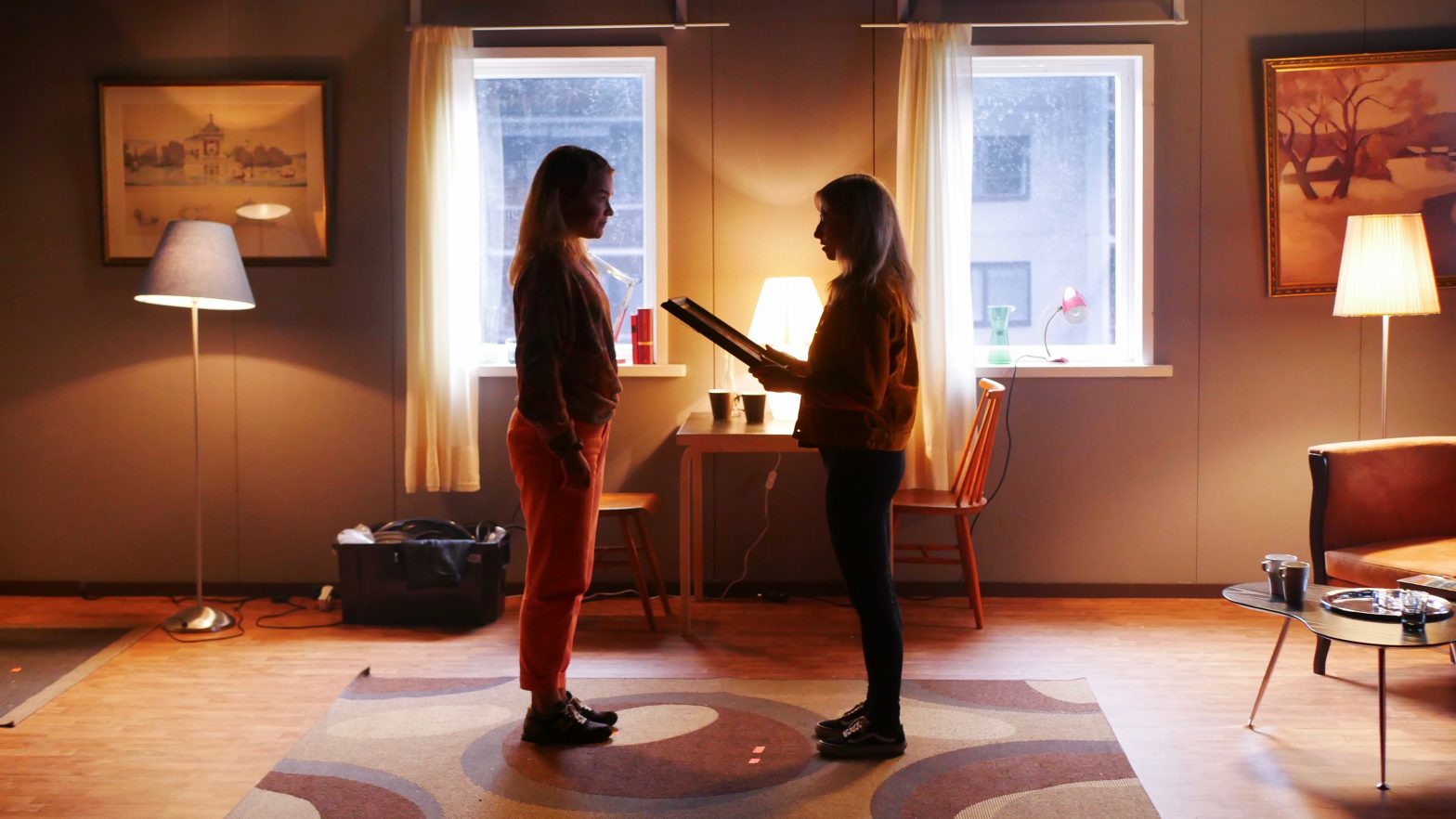As the new academic year has fully taken off now, days at Roihupelto Studio are getting increasingly hectic. The past week, the studio was the venue for a four-day lighting course. Two second-year film students and one student minoring in film took the course as a part of their obligatory studies. The students were instructed by cinematographer Matti Eerikäinen and gaffer Kalle Penttilä. There were also two actors that the students tested the lights on.
Ideal venue for the course
The objective of the course was clear: The students will learn to use light in a scene and space. There were different themes for each day of the course – for example daytime lighting and night scenes. “Creating as natural as possible light in a studio environment is what we are aiming for”, Eerikäinen explains, and continues: “A classroom is way too small for organizing a course like this, and shooting in an actual house would be problematic as we couldn’t control the natural light that is coming from the outside.” Each detail has to be carefully thought when creating the perfect lighting in the studio. Every once in a while, students use a smoke machine to adjust how the light appears in the room and the camera. They often go in the middle of the studio to measure the intensity of the light with a photometer. Fine-tuning details is critical for the best results.


Not an average lecture
Since the first glimpse into the course, it became clear that Eerikäinen’s teaching style is very hands-on, activating the students to learn by doing. With a small class size like this, the conversational style of the instructor seemed to encourage students to trust their own instincts on how to find solutions. “The students have already taken one course on lighting, so they have some knowledge of the basic principles and techniques. 3-point lighting is the foundation, but beyond that it is often opinion-based decisions that the director makes when looking for the perfect lighting for a scene”, Eerikäinen states. This explains Eerikäinen’s low-key teaching style; there is often no right or wrong answer, because there are as many styles as there are filmmakers. He mentions that having more lights is not always better. “During the night scene we noticed that reducing the lighting drew attention to the silhouettes of the actors, which worked great dramaturgically.”

Follow-up with color correction
Matti Eerikäinen says that the camera equipment at Roihupelto works well even in minimal lighting – Aalto Studios’ new Arri Amira UHD resolution cameras minimize the amount of post-production required. Some of the lights that were used for the class were from Aalto Studios Takeout and some were checked out from Valofirma. After three days of shooting and learning at the studio, the students went to Otakaari 7 to adjust the colors of the footage at Aalto Studios’ Color Correction Suite. “Color correction is an important phase in this course, as there is an infinite amount of work when looking for a perfect balance. But even more important is to do the shooting well with good cameras so that there is less to fix in post-production”, Eerikäinen adds.

